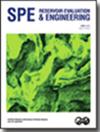Methods to Enhance Success of Field Application of In-Situ Combustion for Heavy Oil Recovery
IF 1.5
4区 工程技术
Q3 ENERGY & FUELS
引用次数: 2
Abstract
While much has been learned in the laboratory over the past four decades about the in-situ combustion (ISC) process, especially through carefully conducted physical model experiments, and many advancements in numerical simulation capability have been achieved, successful field application of ISC remains a rarity. This paper discusses challenges that have been faced in moving from laboratory to field and some strategies that may be used for improving the success rate. There is a brief discussion of the advantages and disadvantages of ISC as a recovery method and comparisons with steam injection, which is the dominant thermal recovery method used in the field. A discussion of the challenges and progress made in numerical simulation is provided with the suggestion that such mathematical modeling can now be a useful tool in designing field projects and can increase the probability of success. The needs of industry to operate safe, simple, and economically and environmentally sustainable projects are discussed along with the currently negative perception of the ISC process in industry. The paper makes some suggestions regarding how to address these issues. The main thesis of this paper is that air injection into a reservoir introduces a large amount of nitrogen that is detrimental to the displacement of oil, and oil recovery yet offers few, if any, advantages. Reducing the amount of noncondensable gas (NCG) associated with the process can be done mainly in two ways—by using oxygen-enriched air injection and furthermore by injecting a mixture of steam and oxygen-enriched air. The paper does not make a comprehensive review of past field projects but does include a summary of promising areas for future application of the ISC combustion recovery process.提高原位燃烧稠油开采现场应用成功率的方法
虽然在过去的四十年里,人们对原位燃烧(ISC)过程有了很多了解,特别是通过仔细进行的物理模型实验,并且在数值模拟能力方面取得了许多进步,但ISC的成功现场应用仍然很少。本文讨论了从实验室转移到现场所面临的挑战,以及一些可能用于提高成功率的策略。简要讨论了ISC采油方法的优缺点,并与注汽采油方法进行了比较,注汽采油是目前油田采用的主要热采油方法。讨论了数值模拟所面临的挑战和取得的进展,并提出这种数学建模现在可以成为设计现场项目的有用工具,并可以增加成功的概率。讨论了工业对安全、简单、经济和环境可持续项目的需求,以及目前对工业中ISC过程的负面看法。本文就如何解决这些问题提出了一些建议。本文的主要论点是,向储层注入空气会引入大量氮气,这对石油的驱油是有害的,而且石油采收率几乎没有任何好处。减少与该工艺相关的不凝性气体(NCG)的量主要有两种方法:一是使用富氧空气注入,二是通过注入蒸汽和富氧空气的混合物。本文没有对过去的现场项目进行全面的回顾,但总结了ISC燃烧回收工艺未来应用的有前途的领域。
本文章由计算机程序翻译,如有差异,请以英文原文为准。
求助全文
约1分钟内获得全文
求助全文
来源期刊
CiteScore
5.30
自引率
0.00%
发文量
68
审稿时长
12 months
期刊介绍:
Covers the application of a wide range of topics, including reservoir characterization, geology and geophysics, core analysis, well logging, well testing, reservoir management, enhanced oil recovery, fluid mechanics, performance prediction, reservoir simulation, digital energy, uncertainty/risk assessment, information management, resource and reserve evaluation, portfolio/asset management, project valuation, and petroleum economics.

 求助内容:
求助内容: 应助结果提醒方式:
应助结果提醒方式:


